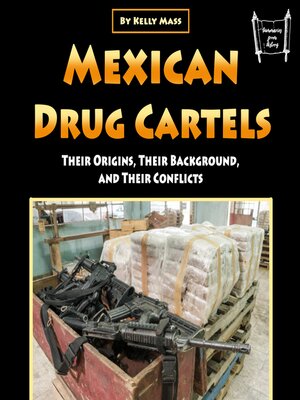Mexican Drug Cartels
audiobook (Unabridged) ∣ Their Origins, Their Background, and Their Conflicts
By Kelly Mass

Sign up to save your library
With an OverDrive account, you can save your favorite libraries for at-a-glance information about availability. Find out more about OverDrive accounts.
Find this title in Libby, the library reading app by OverDrive.



Search for a digital library with this title
Title found at these libraries:
| Library Name | Distance |
|---|---|
| Loading... |
The Mexican drug war, also known as the Guerra contra el narcotráfico en México, is the Mexican theater of the global war on drugs, a campaign led by the United States federal government. This war has resulted in a protracted, asymmetric low-intensity conflict between the Mexican government and various drug trafficking organizations. The Mexican government's main objective when it intervened militarily in 2006 was to curb drug-related violence, which had escalated in the preceding years. The government's stated aim, in collaboration with U.S. officials, was to eliminate the cartels and reduce the demand for drugs trafficking.
Violence erupted after the 1989 arrest of Miguel Ángel Félix Gallardo, who was the leader and founder of Mexico's first major drug cartel, the Guadalajara Cartel. His arrest led to the dissolution of the cartel as high-ranking members splintered off to create their own groups. This fragmentation gave rise to the Sinaloa, Juarez, Tijuana, and Sonora cartels, among others, which began to battle for control over lucrative trafficking routes and territories. This marked a new chapter in the drug war, with the cartels becoming increasingly violent in their efforts to secure dominance.
Mexican drug trafficking organizations have been a powerful force for decades, but their power surged significantly in the 1990s after the collapse of the Colombian Cali and Medellín cartels. By 2007, Mexican criminal groups controlled an overwhelming 90% of the cocaine entering the United States. Efforts to arrest cartel leaders, including those in the Tijuana and Gulf cartels, often resulted in even more violence, as smaller gangs competed for control over key drug trade routes into the U.S.







